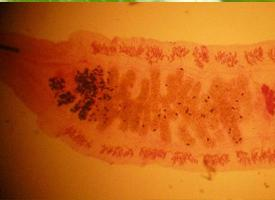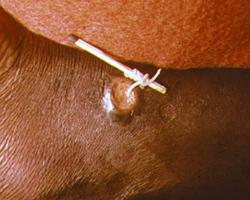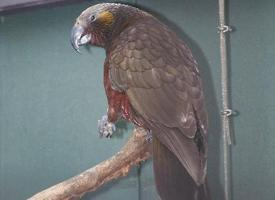
Veszélyeztetettség
| Rettenthetetlen |
Állatleírás
The Southeast Asian liver fluke, scientifically known as Opisthorchis viverrini, is a parasitic flatworm that belongs to the class Trematoda within the phylum Platyhelminthes. This organism has garnered significant attention from the medical and scientific communities due to its status as a major public health concern in various parts of Southeast Asia, including countries like Thailand, Laos, Vietnam, and Cambodia. The liver fluke has a complex life cycle that necessitates specific freshwater snails as its first intermediate host and certain species of freshwater fish as its second intermediate host, before ultimately infecting humans and other mammals as its definitive hosts.Morphologically, Opisthorchis viverrini is a small, leaf-shaped worm, measuring about 5 to 10 mm in length and 2 to 3 mm in width. Its body is flattened dorsoventrally, allowing it to cling to the bile ducts of its hosts where it feeds on bile and epithelial cells. The liver fluke is equipped with two suckers, an oral and a ventral sucker, which it uses for attachment and feeding. Its life cycle begins when eggs are excreted in the feces of an infected host. Once in freshwater, the eggs hatch, releasing miracidia, which must infect a suitable snail host to continue their development. Inside the snail, the parasites undergo several developmental stages, eventually emerging as free-swimming cercariae. These cercariae then infect freshwater fish by penetrating their skin or gills, where they encyst as metacercariae in the fish's tissues. Humans and other definitive hosts become infected by consuming raw or undercooked fish containing these encysted metacercariae.
Once inside the human host, the metacercariae excyst in the duodenum, ascend the biliary tract, and mature into adult flukes in the bile ducts. Here, they can live for many years, causing chronic infection. The presence of O. viverrini in the bile ducts can lead to a range of hepatobiliary diseases, including cholangitis, cholecystitis, gallstones, and the potentially fatal cholangiocarcinoma (bile duct cancer). The association between O. viverrini infection and cholangiocarcinoma is particularly alarming, as this type of cancer is notoriously difficult to diagnose and treat, leading to a high mortality rate.
The control and prevention of O. viverrini infections are challenging, requiring integrated approaches that include public health education, improvements in sanitation, and dietary changes to discourage the consumption of raw or undercooked fish. Additionally, mass drug administration with praziquantel has been employed as a strategy to reduce the prevalence of infection in endemic areas.
In summary, Opisthorchis viverrini is a parasitic flatworm that poses significant health risks to humans in Southeast Asia. Its complex life cycle involving snail and fish intermediate hosts culminates in human infection through the consumption of contaminated fish, leading to severe hepatobiliary diseases. Efforts to control and prevent infections by this parasite are crucial for public health in affected regions.
Hasonló állatok
Új állatfotók
Top 10 állat
- Dolphin gull (Leucophaeus scoresbii)
- Diana monkey (Cercopithecus diana)
- Moustached guenon (Cercopithecus cephus)
- Galápagos tortoise (Geochelone nigra complex)
- Japanese macaque (Macaca fuscata)
- Russian tortoise (Testudo horsfieldii)
- Stone loach (Barbatula barbatula)
- Greek tortoise (Testudo graeca)
- Common flying dragon (Draco volans)
- Vendace (Coregonus albula)


